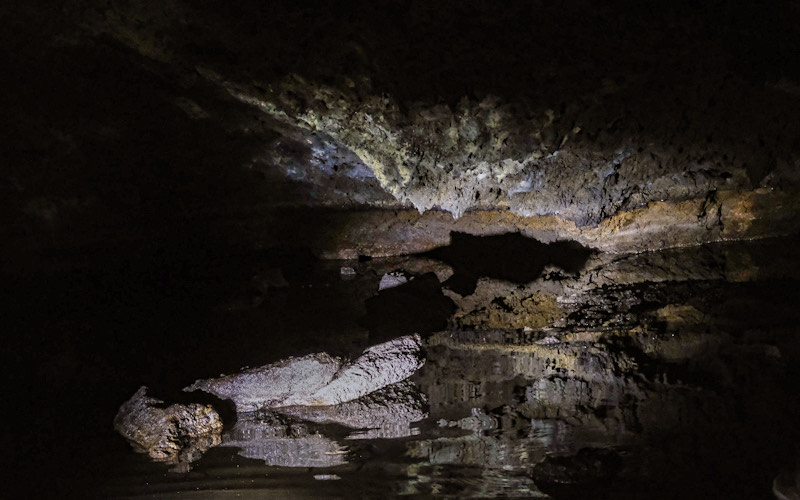Hotel pick up & drop off
Private transportation
Private tour guide (Bilingual Spanish/English)
Safety equipment: helmets, front headlamps and sticks
Bottled water
The Roiho sector, positioned 3 kilometers to the northwest of Hanga Roa, constitutes a significant portion of the Rapa Nui National Park. The caves in this sector are known to be the largest volcanic cave system in Chile and one of the largest in the world and hold significant geological and cultural importance. They were formed by volcanic eruptions, resulting in a complex network of tunnels and chambers.
These caves, called "ana" in the local language, are not just natural formations but also bear profound historical significance for the native Rapa Nui people. The caves were used for a multitude of functions, including as shelters, storage spaces, ceremonial sites, and even burial grounds. They provided protection from the elements and were essential for the survival of the island's inhabitants. The Rapa Nui people utilized these caves as a means of preserving food, water, and other resources during times of scarcity or conflict.
Moreover, the caves played a crucial role in the island's religious and spiritual practices. Many of the caves were considered sacred, serving as locations for rituals, ceremonies, and burial rites.
Overall, the underground caves of Rapa Nui are not just geological wonders but also repositories of the island's rich history and cultural heritage. They offer a window into the lives of the Rapa Nui people, their beliefs, traditions, and societal practices, making them a critical component of the island's identity and a source of fascination for visitors and researchers alike.
ANA VAI TEKA
Rapa Nui, Chile
Ana Vai Teka Cave is a hidden gem boasting captivating rock formations, a unique lagoon-like interior fed by rainwater, and ancient rock art. Here you discover the historical significance of this site, including its connection to the Vai Teka ahu and the Miru Toko Te Rangi clan.
ANA TAPAIRI
Rapa Nui, Chile
Ana Ohoka and Ana Tapairi stand out among the caverns, bearing witness to the funeral rites and spiritual practices of the island's past inhabitants. Seeing these the intriguing structures above ground uncovers a world where the natural landscape intertwines with the spiritual legacy of Rapa Nui.
ANA TE PAHU
Rapa Nui, Chile
Ana Te Pahu, the largest cave in Rapa Nui National Park, has four underground chambers, totaling in a length that exceeds 7 kilometers. Formed by lava channels and connecting chambers, it's significant as a volcanic tube. Referred to as the "cave of the bananas," it was utilized by ancient islanders for cultivation and food preparation. Its ample size and wind protection made it an ideal site.
AHU TE PEU
Rapa Nui, Chile
Ahu Te Peu is an important archaeological site on Easter Island, offering valuable insights into the ancient Rapa Nui civilization. It features ruins of an ancient village, including the impressive 43-meter-long boathouse or hare paenga named Tore Tahuna. The site also includes two platforms with deteriorated moai statues. Ahu Te Peu is linked symbolically to the burial sites of two significant figures in Rapa Nui history.
ANA TE PORA
Rapa Nui, Chile
Ana Te Pora, known as the "cave of the reed canoe," is a long lava tube used as a refuge cave during conflicts on Easter Island. It has a large vault-shaped room with smooth walls and features a protected entrance and stone corridor for added security. Inside, there is a rectangular stone formation of unknown purpose. Towards the end of the room, a small stone wall leads to a narrow and dark section, which opens up to a natural entrance featuring a beautiful fig tree.
ANA KAKENGA
Rapa Nui, Chile
Ana Kakenga, also known as the "two windows" cave, is a volcanic tube stretching approximately 50 meters in length. It once served as a 'kionga,' a place of refuge during historical conflicts between island clans. The entrance is camouflaged and accessed through a narrow passage. Inside, visitors are rewarded with amazing views from two large windows carved into the cliff. The site is known for its geological features, including stalactites and stalagmites.
Stops
6
Durantion
Half Day
Group size
4
Difficulty
Medium





















